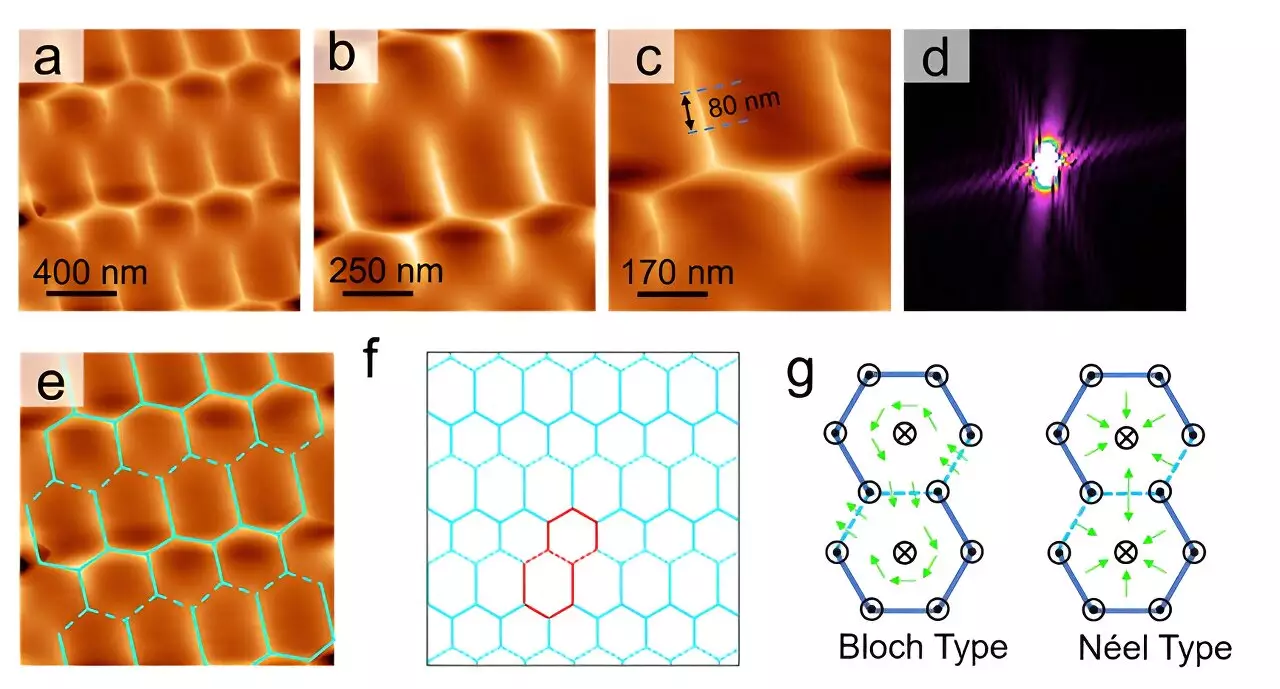Recent advancements in material science have revealed a pioneering study led by a research consortium in China, which has successfully identified intrinsic magnetic structures within a kagome lattice. Utilizing a sophisticated magnetic force microscopy (MFM) system at the Steady High Magnetic Field Facility (SHMFF) combined with electron paramagnetic resonance spectroscopy and micromagnetic simulations, the research team has made significant strides in understanding the dynamics of these unique lattice configurations. Their work was prominently published in the journal Advanced Science on August 19, marking a notable contribution to the field of material physics.
Kagome lattices are distinguished not only by their intricate geometric arrangement but also by their exceptional electronic properties. These structures exhibit intriguing characteristics like Dirac points and flat bands, which are vital for the manifestation of topological magnetism and unconventional superconductivity. Such properties are crucial for the development of technologies aimed at harnessing quantum phenomena, especially in areas such as high-temperature superconductivity and quantum computing applications. Despite this excitement, understanding the inherent spin configurations within these lattices has remained a significant challenge.
The research team, under the leadership of Prof. Lu Qingyou from the Hefei Institutes of Physical Science, along with Prof. Xiong Yimin of Anhui University, uncovered a novel lattice-modulated magnetic array in the binary kagome single crystal Fe3Sn2. Their findings revealed a distinctive broken hexagonal structure attributed to the interplay between lattice symmetry and magnetic anisotropy. This observation was bolstered by Hall transport measurements, which confirmed the existence of topologically broken spin configurations within the material, further invigorating the study of kagome lattices.
In an intriguing twist, the researchers found that the magnetic reconstruction in Fe3Sn2 occurred through a second-order or a weak first-order phase transition, challenging prior notions that suggested it was a first-order transition. Their results led to a reconsideration of the previously accepted low-temperature magnetic ground state, redefining it as an in-plane ferromagnetic state rather than a spin-glass state. This recalibration has significant implications for our understanding of magnetic properties within similar materials.
Furthermore, the team’s quantitative MFM data unveiled persistent out-of-plane magnetic components at lowered temperatures—an aspect that could redefine future explorations in this space. By employing the Kane-Mele model, the researchers provided a framework for understanding the emergence of a Dirac gap at low temperatures, effectively overthrowing previous theories positing that skyrmions were present under these conditions. This groundbreaking research not only enriches the narrative surrounding topological magnetic structures but also lays the groundwork for innovations in quantum computing and high-temperature superconductivity.
The collaborative efforts of these scientists have opened up new avenues for inquiry in the realm of magnetic materials, setting the stage for innovative advancements in both theoretical and applied physics. The ongoing investigation into these unique properties will undoubtedly yield further insights and applications in the fascinating world of quantum materials.


Leave a Reply